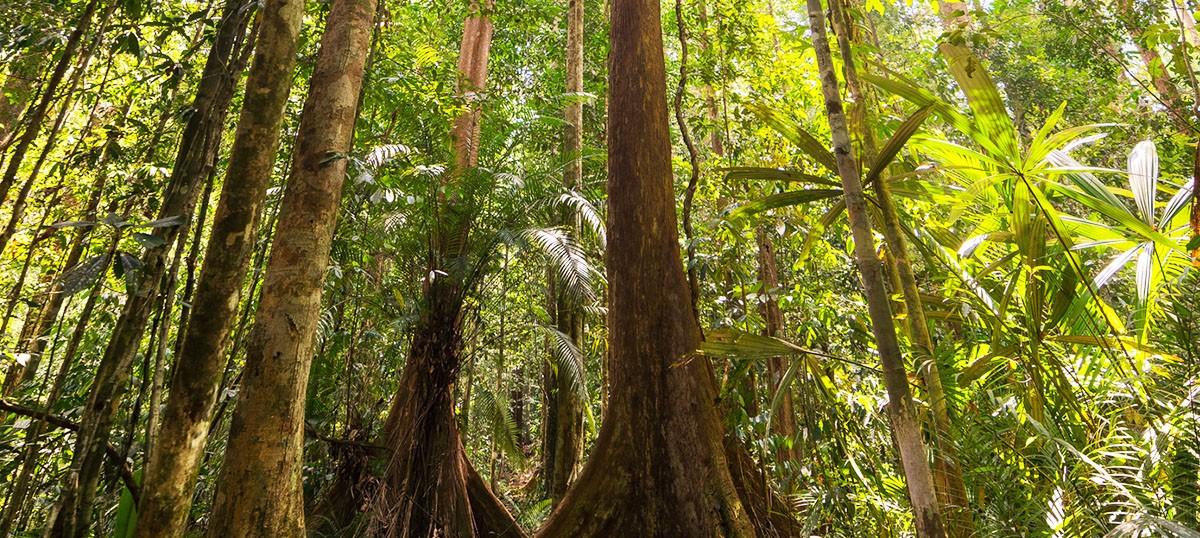

Meet Whale Sharks at These Stunning Spots in Indonesia
Did you know that August 30th celebrates International Whale Shark Day? This celebration highlights the colossal creatures, encouraging everyone for marine conservation efforts aimed to protect this shark species. As the world waits to travel again, Indonesia emerges as a great tourist choice to observe the diverse flora and fauna, absorb quality experiences and practice impactful environmental action.
Let’s take a closer look at these sea creatures and learn some whale shark facts!
What are Whale Sharks?
Whale sharks (Rhincodon typus) are ocean creatures that can grow up to 11 tons and have a length of around 12 meters. These animals reach maturity when they are about 30 years old and can live to be about 60 to 100 years of age! Though considered as the largest species of sharks, whale sharks feed off of plankton and are gentle creatures. They are found in various tropical oceans around the world. One particular spot to observe whale sharks is Indonesia. If you’re interested in discovering whale sharks yourself, we have covered recommended places for you to visit.
Here are 4 go-to destinations in the archipelago for a whale shark diving experience:
Talisayan Derawan, Berau, East Kalimantan
Imagine a place with vast pristine water, where you can swim and dive with sea creatures. That popular destination is Talisayan Derawan in East Kalimantan. According to locals, whale sharks can be seen when fishermen begin their day fishing since many of them throw their catches into the sea.
It is recommended for you to plan your diving session here in Talisayan when the south winds are blowing during the summer months, which is around mid-June to mid-September.
To reach Talisayan, you need to fly to Kalimarau Airport in Berau, then continue the journey by land, reaching the area with a 4-hour drive. You will need to take a boat from Talisayan Pier to the center of the water. Keep in mind that whale sharks only appear after dawn and before the sun rises. So, be sure to wake up early in the morning!

Botubarani, Kabila Bone, Bone Bolang, Gorontalo
Whale sharks can also be seen in Botubarani in Gorontalo. According to local observations, you can glimpse these gentle animals appear around the month of June. Though not as frequently spotted as in Talisayan Derawan, this place is far easier to reach. From the city of Goranto, you can get to this site with about a 30-minute drive. But it will take you around 1.5-hour from Djalaludin Airport.
Around Botubarani, you can also visit plenty of other tourist attractions. One of which is Bukit Cinta or the “Love Hill” when translated in english. This spot can easily be reached from Gorontalo as it is about 30 km away from the city.

Saleh Bay, Sumbawa, West Nusa Tenggara
Another easy to reach site for whale shark diving experiences is at Saleh Bay, Sumbawa. This destination offers a glimpse of amazing marine life and snorkeling experiences. It is also a great spot to observe whale sharks. You can experience whale shark conservation tourism at Labuan Jambu, a village neary the bay. Reach this site from the Sultan Muhammad Kaharuddin III Airport in Sumbawa Besar, then continue the journey of about 100 km to Labuan Jambu.
There are also plenty of must-visit spots nearby as well! Go island hopping to Lipan Island, where you can view coastal cliffs, or Dangar Ode, with its pearlescent sand. But if you want to discover a secluded nature spot, a recommended place is Gili Mariam. Stroll along their white sandy beaches or go up their small hill. You can even set your tents here for some camping fun amongst Mother Earth. Once it’s night, you can glance dreamly at the wonderful night sky.

Teluk Cenderawasih National Park, Duairi, West Papua
Filled with an immense protected marine reserve, Teluk Cenderawasih National Park, West Papua, offers vibrant flora and fauna. You’ll encounter plenty of wildlife here in one of the largest national parks in Southeast Asia, including the stunning exotic Cendrawasih bird. In its water, you can spot whale sharks all year round, but it’s best to encounter them at Kwatisore Bay, near Nabire. It’s also recommended to dive in the morning, since they are often seen in the early hours.
While you’re there, you can enjoy its diverse flora and fauna. Snorkel to view its coral reefs and swim to greet colorful fishes. Liveaboard travel is also recommended to experience in this area! Regardless of your preference, you’ll be sure to have an adventure here!

Diving Tips & Codes of Conduct
Whale sharks are endangered species and are very vulnerable to being overexploited. That’s why it is important to protect these creatures by implementing whale shark conservation practices. You too can make a difference by diving responsibly. Here are some codes of conduct and tips to follow while diving:
- While diving, under no circumstances could you touch, ride, chase or harass the whale shark.
- Never swim in front of the whale shark or block its path.
- Never use any equipment that could disturb or harm whale sharks, such items include cameras with intense flash or underwater scooters.
- Always keep a minimum distance of 3 meters when observing these creatures in the water.
- Diving with whale sharks must only take place in the duration of 15 minutes for each group.
- Participants must not use sunscreen.
- Must follow all instructions and directions given by the guide.
There are also rules for the boat operating in the diving spots and the operators in charge for the session as well, such as:
- The amount of people participating in one diving session is limited to 4 - 5.
- The number of boats is also limited to one per 50 meters radius and must use a low speed engine.
- When in the diving spot, the boat machine has to be turned off.
- Operators must conduct a clear briefing with all participants before diving.
- Signage must be placed in the diving spot.
When you’re planning your escapade to these whale shark destinations, be sure to implement all the CHSE ( Cleanliness, Health, Safety, and Environmental Sustainability ) health protocols. This means to always wear your mask, wash your hands, and keep your physical distance from others.
Suggested for you

Indonesia’s Mighty Tropical Rainforests and Unique Endangered Wildlife
Load More
❯
Experience These Safari Adventures on Your Next Visit to Indonesia
Load More
❯
8 Top World Class Diving Resort for You to Enjoy in Indonesia
Load More
❯
12 Inspiring Fit-Cation Escape You can Enjoy in Bandung
Load More
❯
10 Indigenous Animals That You Can Meet in Indonesia
Load More
❯
6 Exciting Adventures amongst the Marvelous Wildlife of Indonesia
Load More
❯